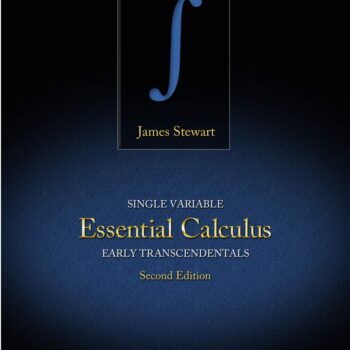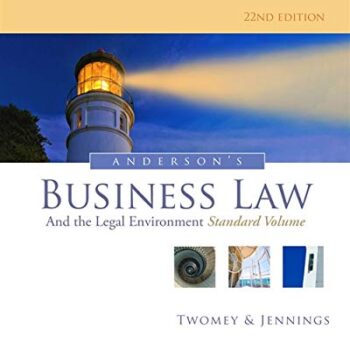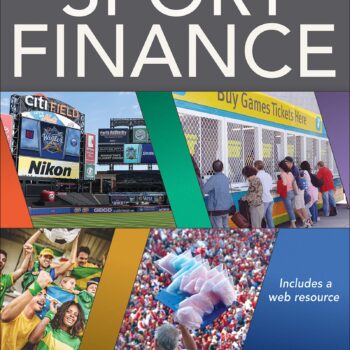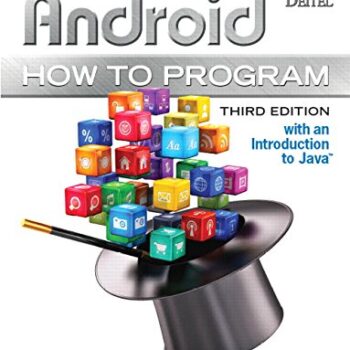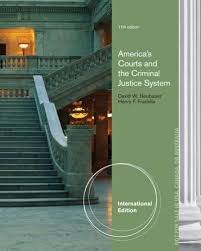
Test Bank For America’s Courts and the Criminal Justice System, International Edition 11th Edition by David W. Neubauer
Original price was: $55.00.$24.00Current price is: $24.00.
Digital item No Waiting Time Instant Download
Test banks are sets of questions and answers intended to facilitate students’ effective studying. The Test Bank for America’s Courts and the Criminal Justice System, International Edition 11th Edition by David W. Neubauer has questions that are samples that examine several aspects of criminal justice and the court system.
Merits of a Test Bank
There are various test banks available and this test bank in particular can tremendously boost your learning experience. It has the following features:
- Sample Exams: There are multiple-choice, true or false, and short-answer sample examinations that approximate what you will encounter on the actual examinations. This kind of practice helps in familiarizing yourself with the content.
- Self Discovery: After taking the quizzes, one can evaluate his/her comprehension of the subjects. This aids one in detecting aspects when the review may be intense.
- Self Study: The test bank allows you to advance at your own pace, meaning learning can easily fit into your busy schedule.
Major topics
In the Test Bank for America’s Courts and the Criminal Justice System, emphasis is placed on major issues like the following:
- The Hierarchy of Courts: Get acquainted with the American court hierarchy and the operations of the courts.
- Criminal Justice: Study the primary principles of criminal justice that provide insights on crime, covering terms and types of crime including a felony and a misdemeanor.
- The Justice Process: Learn the movement of the cases in the courts from the time a suspect is arrested to the time of the end of the trial.
- Judicial Decision Making: Find out how judges function how they make decisions and what their influences are.
Enhancing Your Knowledge
This test bank will enhance your understanding of;
- Legal Principles: Learn legal terms which are of great significance to your study and practice.
- Critical Thinking: The different categories of questions will propel you to question and critique and make use of what you have formulated.
- Exam Preparation: You will feel much ready and confident during the test leading to high academic achievement.
Conclusion
The Test Bank for America’s Courts and the Criminal Justice System International Edition 11th Edition United States. David W. Neubauer is a must havemust-haveners in the field of criminal justice studies. It has got all tequired content coverage and varietiesa varietyions to assess your comprehension. In using this test bank, you are likely to achieve success in your courses and the complexities of the court system will be well understood.
Test Bank For America’s Courts and the Criminal Justice System, International Edition 11th Edition by David W. Neubauer
Chapter 3 FEDERAL COURTS TEST BANK
MULTIPLE CHOICE
1. The United States has a dual court system consisting of:
|
a. |
district and superior courts. |
c. |
criminal and civil courts. |
|
b. |
trial and appellate courts. |
d. |
state and federal courts. |
ANS: D REF: 57 OBJ: 1
2. Which of the following is true of appellate courts?
|
a. |
The function of an appellate court is to carefully review the facts that were presented at a defendant’s criminal trial. |
|
b. |
Appellate court decisions are always made by a group of judges; decisions are never made by a single judge. |
|
c. |
Appellate courts, like trial courts, may hear testimony from witnesses, conduct trials, or use juries. |
|
d. |
Appellate court decisions must be unanimous. |
ANS: B REF: 61 OBJ: 2
3. Original and appellate jurisdiction fall under what classification of jurisdiction?
|
a. |
geographical jurisdiction |
c. |
hierarchical jurisdiction |
|
b. |
subject matter jurisdiction |
d. |
general jurisdiction |
ANS: C REF: 60-61 OBJ: 2
4. What federal court has original jurisdiction over disputes between states?
|
a. |
Legislative Court |
c. |
Court of Appeals |
|
b. |
District Court |
d. |
Supreme Court |
ANS: D REF: 61 OBJ: 1
5. The political dynamics surrounding the role of the federal government in the criminal justice system are based on the imbalance between federal official’s need to be seen as doing something about the crime problem and:
a. their limited jurisdiction to do anything.
b. lack of support from states to partner in addressing crime rates.
c. fear of increased litigation arising from jurisdictional issues.
d. double jeopardy issues related to parallel state and federal and federal prosecutions.
ANS: A REF: 84-85 OBJ: 8
6. During the Constitutional Convention, Anti-Federalists maintained the belief that a strong national government would:
a. provide political and economic unity.
b. weaken individual liberties.
c. abolish state courts.
d. create a uniform body of federal law.
ANS: B REF: 61-62 OBJ: 3
7. Which Article of the U.S. Constitution provides the basis for the federal judiciary?
|
a. |
Article I |
c. |
Article III |
|
b. |
Article II |
d. |
Article IV |
ANS: C REF: 62 OBJ: 3
8. Which of the following is not true of federal district court judges?
|
a. |
They are nominated by the President. |
|
b. |
They must be confirmed by the U.S. Senate. |
|
c. |
They must reside in their district. |
|
d. |
They are appointed for eight yeaeight-yearANS: D REF: 65-66 OBJ: 3 |
9. There are ________ U.S. District Courts, with each state having at least one.
|
a. |
59 |
c. |
94 |
|
b. |
78 |
d. |
111 |
ANS: C REF: 65 OBJ: 3
10. In 1968 Congress created this position to alleviate the workload of U.S. District Courts and to replace the former position of U.S. commissioner.
|
a. |
U.S. magistrate judges |
c. |
U.S. bankruptcy judges |
|
b. |
U.S. attorneys |
d. |
U.S. circuit justices |
ANS: A REF: 65 OBJ: 3 and 4

